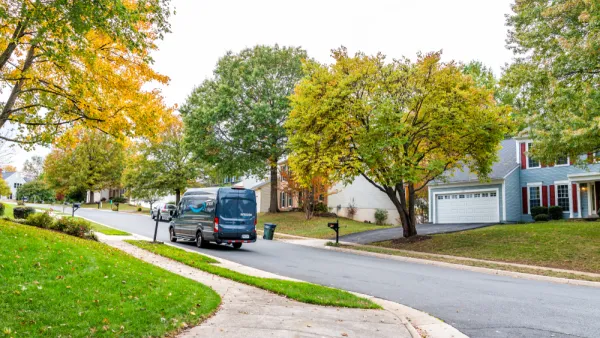Past examples of state and provincial governments preempting the land use authority of local governments present several lessons on how to do state-mandated upzoning effectively.
Michael Andersen writes of the possibility of state preemption of local zoning laws in the Pacific Northwest—i.e., state-mandated upzoning to spur housing development in high-priced cities.
With California attempting and failing to approve SB 827, perhaps the most widely discussed and debated example of state preemption in the last year, other state governments are also at various stages of consideration with the idea of passing some kind of statewide upzoning.
To ponder the potential of state-mandated upzoning in the Pacific Northwest, Andersen looks for lessons in previous examples of state preemption in the regions of greater Vancouver, the state of Washington, and the state of Oregon. Andersen finds a long history of state (or province, in British Columbia's case) preemption from the history of these states and cities. Andresen draws seven key lessons from laws like British Columbia's 1973 Agricultural Land Reserve, which set growth boundaries around Vancouver; the Washington Housing Policy Act, which legalized accessory dwelling units all over the state; Washington's House Bill 1490, which failed in 2009 but would have upzoned transit oriented neighborhoods; and Oregon's urban growth boundary law, SB 100.
After running through a detailed series of observations on these examples, Andersen also catches up on the current status of state preemption in the Pacific Northwest,
A relatively modest bill, legalizing ADUs statewide, passed Oregon’s legislature last year. (Trying to avoid the pitfall of Washington’s earlier ADU legalization, Senate Bill 1051 allowed cities to subject ADUs only to “reasonable” regulations—another case of Oregon legislators leaving the details to courts and regulators.) As in Washington, Oregon faces renewed talk about new state-level upzoning bills.
Finally, Andersen also examines the political realities state governments will have to negotiate to enact mote state preemption in the future.
FULL STORY: COULD STATE-LED UPZONES HAPPEN HERE? 7 LESSONS FROM MODERN CASCADIA

National Parks Layoffs Will Cause Communities to Lose Billions
Thousands of essential park workers were laid off this week, just before the busy spring break season.

Retro-silient?: America’s First “Eco-burb,” The Woodlands Turns 50
A master-planned community north of Houston offers lessons on green infrastructure and resilient design, but falls short of its founder’s lofty affordability and walkability goals.

Delivering for America Plan Will Downgrade Mail Service in at Least 49.5 Percent of Zip Codes
Republican and Democrat lawmakers criticize the plan for its disproportionate negative impact on rural communities.

Test News Post 1
This is a summary

Test News Headline 46
Test for the image on the front page.

Balancing Bombs and Butterflies: How the National Guard Protects a Rare Species
The National Guard at Fort Indiantown Gap uses GIS technology and land management strategies to balance military training with conservation efforts, ensuring the survival of the rare eastern regal fritillary butterfly.
Urban Design for Planners 1: Software Tools
This six-course series explores essential urban design concepts using open source software and equips planners with the tools they need to participate fully in the urban design process.
Planning for Universal Design
Learn the tools for implementing Universal Design in planning regulations.
EMC Planning Group, Inc.
Planetizen
Planetizen
Mpact (formerly Rail~Volution)
Great Falls Development Authority, Inc.
HUDs Office of Policy Development and Research
NYU Wagner Graduate School of Public Service





























